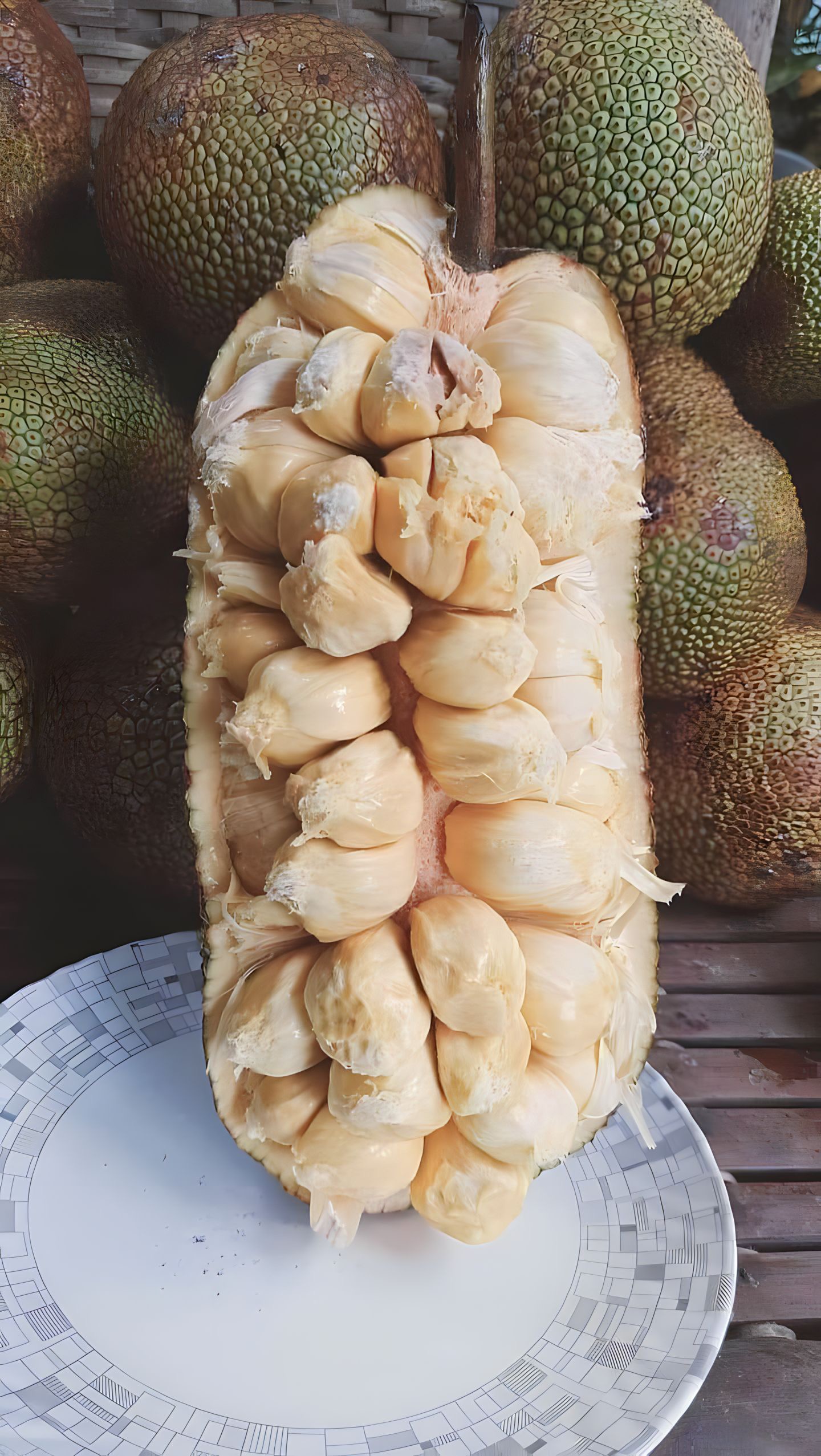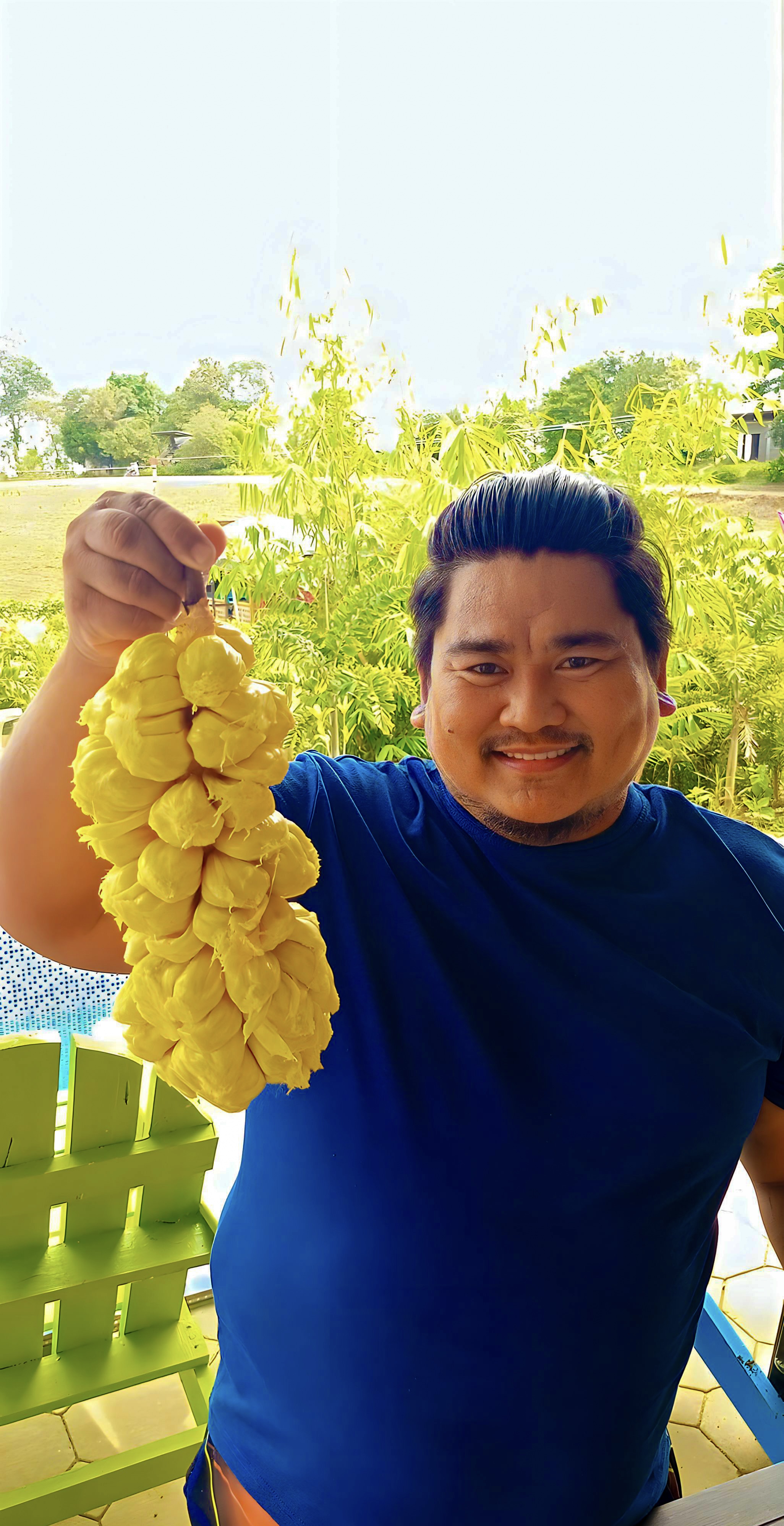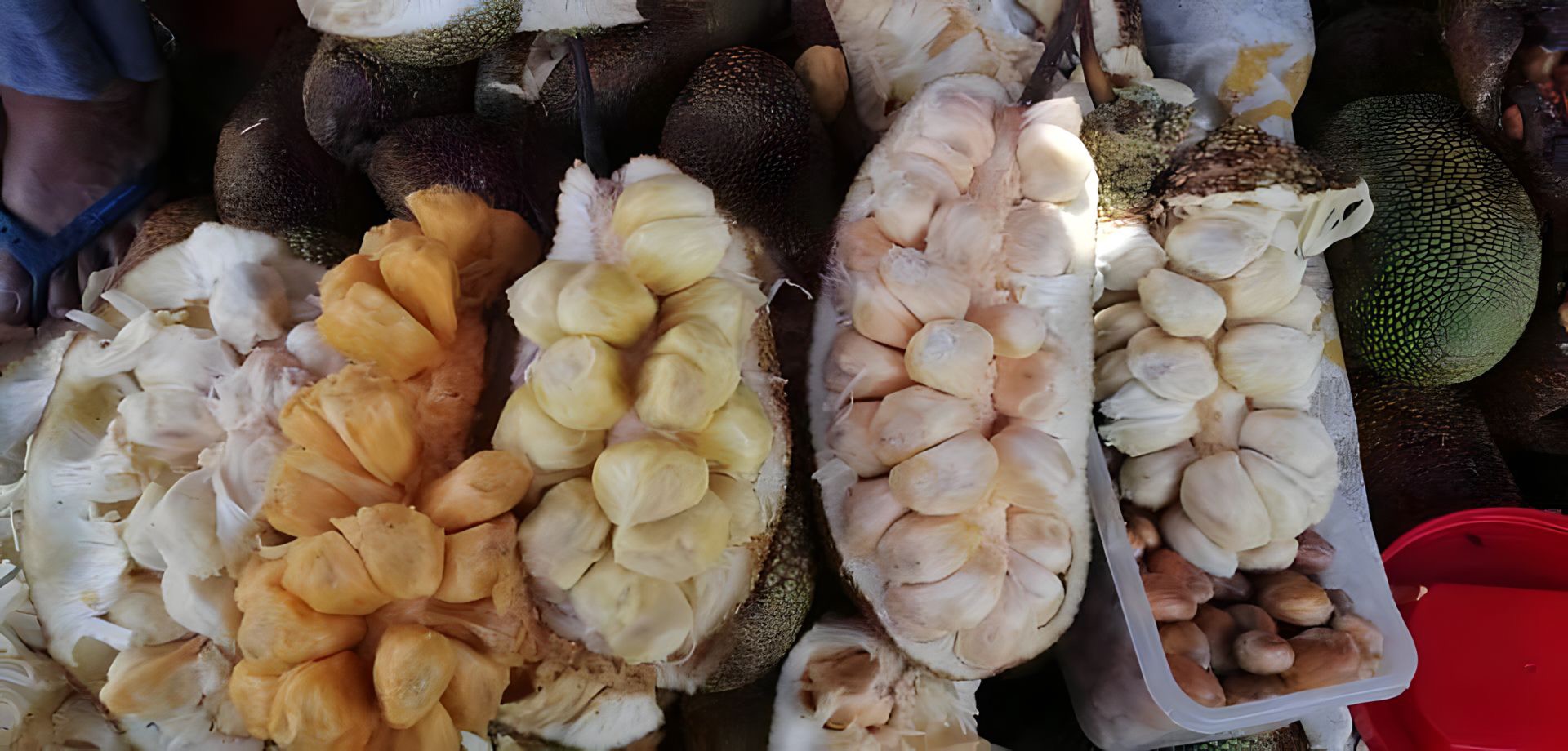The new kid on the block: Meet the cempedak, the hidden gem of Filipino agriculture
By RICHELLE A. NIEPES
Have you ever encountered a fruit that carries the distinctive aroma of durian but unfolds a taste similar to jackfruit, with subtle notes of marang (Artocarpus odoratissimus)?
It might sound peculiar or even bizarre, but such a fruit exists. Meet the cempedak (Artocarpus integer). This tropical delight is indigenous to Southeast Asia, particularly flourishing in Malaysia, Thailand, Indonesia, and Borneo.

Cempedak belongs to the same genus as Jackfruit, marang, breadfruit, and camansi (Artocarpus camansi) and shares a familial connection with Moraceae or mulberries.
Nutritional attributes and relative unfamiliarity in the Philippines
Cempedak offers a wealth of benefits. Packed with essential vitamins and minerals, it is a nourishing addition to one’s diet. The fruit is known for its significant vitamin C content, contributing to immune system support and skin health.
Among its counterparts, cempedak draws parallels with Jackfruit in many aspects, albeit in a more petite and slender form. Noteworthy is its sweeter and creamier taste compared to jackfruit.
Despite its remarkable qualities, cempedak remains a relatively undiscovered gem in the Philippines, only familiar to those who have explored neighboring Southeast Asian countries. This exotic fruit, rich in flavors, patiently awaits broader recognition on the local stage.

Mr. Jong M. Flores: The Cempedak King
In the heart of Don Carlos, Bukidnon, lives a visionary farmer known as Mr. Jong M. Flores, fondly recognized as the Cempedak King since he is one of the pioneering propagators of the fruit. Proudly owning the Brua-Flores Eco Farm in Barangay Bocboc, Don Carlos, Bukidnon, he has emerged as a pioneer and success story in the propagation of Cempedak.

Hailing from a family of corn and sugarcane farmers, Mr. Flores, a licensed professional teacher, discovered his true passion for agriculture at a young age. Although not professionally trained as an agriculturist, his enthusiasm led him to a few years of teaching before he boldly decided to follow his heart into farming. His commitment was further strengthened by pursuing a Master’s degree in Agricultural Extension.
In 2019, Mr. Flores commenced his cempedak journey by planting this rare fruit after obtaining the planting material from a friend in Thailand. The onset of the pandemic in 2020 prompted him to establish a small nursery farm, creating the opportunity to expand and realize his dream of introducing and popularizing cempedak in the Philippines. He envisions households across the country savoring this rare fruit within the next 4 to 5 years, believing it can serve as an alternative source of income.

Mr. Flores has over 20 trees bearing fruits, and he continues expanding it into a two-hectare Plantation. Flores, who has amassed a collection of over 150 species of various fruits from different countries on his farm, expressed a commitment to preserving native Filipino fruit trees while incorporating exotic ones. Among the rare fruits he has collected, cempedak stands out. As he proudly asserts, “You can never go wrong with cempedak. This fruit is a good investment, adaptive to Philippine soil and environmental conditions, and one of the easiest to propagate.”

Cempedak cultivation and propagation
Currently propagating cempedak through sexual propagation (seeds) and venturing into asexual propagation through grafting, Mr. Flores finds the latter challenging due to the sticky white latex characteristic of the Artocarpus species. Cempedak’s rapid growth and low maintenance requirements make it possible to expect fruit within four to five years after planting, with each tree estimated to yield around 50 kilograms of fruit per harvest twice a year. The fruiting season spans from March to August, peaking in August.

Economic opportunities and income generation
Based on Mr. Flores’ experience, the estimated income for cempedak fruit per hectare per harvest is around 300,000-400,000 pesos, with the potential for an annual income of 600,000-800,000 pesos considering two harvests a year. Moreover, venturing into value-added products for cempedak, such as ice cream, yema spread, pastel, and cakes, presents an opportunity to significantly increase income by as much as four times.

Mr. Flores has five compelling reasons for cultivating cempedak:
One of the primary reasons to cultivate cempedak is its versatility as a food crop. The raw fruit can be utilized in various culinary applications, similar to jackfruit. The flesh can be cooked as a vegetable, offering a unique and flavorful addition to multiple dishes. The edible seeds can be boiled and consumed, adding nutritional value to meals. The ripe fruit, known for its captivating aroma and delicious taste, makes it a desirable option for both personal consumption and culinary ventures.
Beyond its utility as a food source, cempedak is a valuable cash crop. Farmers can generate income by selling the harvested fruits to local markets and grocery stores or even exporting them to regions where Cempedak is in demand. The economic viability of cempedak as a cash crop contributes to the financial sustainability of farming operations.
Scaling up the cultivation of cempedak to larger hectares opens up the possibility of establishing a commercial farm. This can be a lucrative venture, mainly if marketed strategically. Entrepreneurs could explore innovative business models, such as “eat all you can” cempedak farms where customers pay a fixed price to enjoy unlimited access to the delectable fruit. Moreover, the seeds obtained from the harvested fruits can be preserved for propagation, ensuring a continuous supply for future production.
Cempedak can be considered an industrial crop, with the potential for value-added product development. The fruit’s unique flavor and texture make it suitable for processing into various products such as jams, preserves, snacks, and beverages. Establishing processing facilities for cempedak-derived products not only adds value to the crop but also diversifies income streams for farmers, contributing to the overall economic resilience of the agricultural enterprise.
Cultivating cempedak also aligns with the concept of a forest crop. The trees contribute to ecological balance and biodiversity, and their cultivation can be integrated into agroforestry systems. Agroforestry practices involving cempedak can provide environmental benefits, including soil conservation, carbon sequestration, and the creation of habitat for diverse flora and fauna. This approach promotes sustainable farming practices that harmonize with natural ecosystems.
Cempedak propagation techniques
According to Mr. Flores, the propagation of cempedak is a straightforward process. When dealing with a seedling, it is advisable to plant it at a depth of 50cm and with a diameter of approximately 50cm. Enhance the soil with organic matter, such as vermicast, to provide natural fertilization.

To ensure proper growth, position the seedlings about 5 cm above the base of the stem and secure them to the branch or bamboo for support, enabling the plant to grow upright. Maintain a planting distance of approximately 8 x 8 m for optimal results.
Nationwide outreach and vision for Don Carlos, Bukidnon
Mr. Flores offers well-established cempedak seedlings at the individual price of P500.00. Recognizing the potential for broader impact and support, he extends a generous discount of P250 each for bulk purchases or transactions with institutions.
This endeavor is not confined to a specific locality; Mr. Flores has cast his net nationwide, catering to a diverse clientele that spans Luzon and Visayas. His commitment to the propagation of Cempedak goes beyond regional boundaries, ensuring that enthusiasts and farmers across the country have access to quality seedlings. Through this expansive outreach, Mr. Flores aims to contribute to the widespread adoption and success of Cempedak cultivation, fostering a network of growers and enthusiasts from Luzon to Mindanao.
When questioned about potential future competition and market saturation concerns, he responded, “I haven’t considered that. My primary objective is to assist Filipino farmers and introduce Cempedak. I would be delighted if it evolves into an industry, especially if it gains recognition in the Philippines.”
In his vision, Mr. Flores sees Don Carlos, Bukidnon, not only as a hub for cempedak cultivation but as the undisputed cempedak capital of the Philippines. Drawing parallels to Davao’s fame for durian and Camiguin’s recognition of lanzones, he aspires for Don Carlos to establish a similar reputation for the distinctive cempedak fruit.

To turn this vision into reality, Mr. Flores proactively collaborates with diverse institutions and organizations. This strategic alliance aims to fortify the existing knowledge base and propel forward-reaching research initiatives. By fostering these partnerships, he seeks to elevate the status of Cempedak farming in Don Carlos, transforming it into a recognized center of excellence for this unique and promising agricultural venture.
Photos courtesy of Brua-Flores Eco Farm